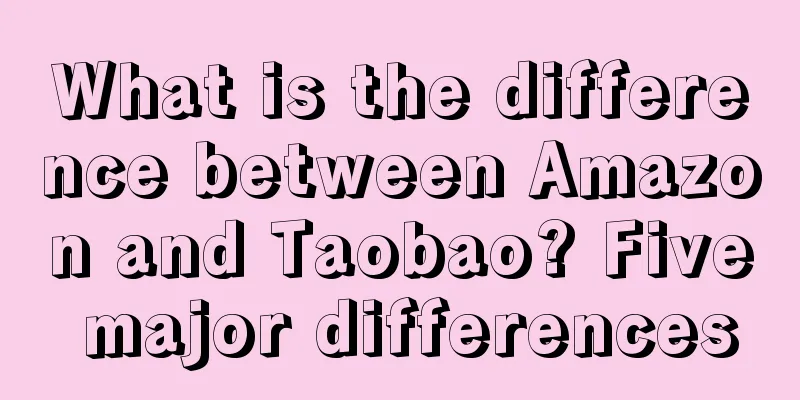Traffic Alchemy of AI Applications

"Among the five colleagues who left, at least three were working on applications," an employee who just resigned from a large company told Photon Planet. Executives from large companies are leaving and forming groups to look for financing, and members of popular project teams are leaving to look at applications. This is the most realistic portrayal of the current AI track. Entering 2024, the overall situation of the model layer has been determined, and few new players can enter. However, the threshold for AI applications, which are full of twists and turns, is not high, and the investment cost is low. "One person + N GPTs" is equivalent to a startup team. Another former product manager who just resigned from Baidu and wanted to devote himself to overseas AI applications did some calculations: hiring four employees, two Claude Pros (salary $40/month), one GPT (salary $20/month), and one Devv AI (salary $20/month), the total cost per month is $80. From technical development to UI design, everything is available, and he only needs to raise requirements as a product manager. "You may have to return the product to the factory after all the work, but at least you have to give it a try, just in case it works," said a former employee of a large company. Based on this, the AI applications that can be seen on the market are just the tip of the iceberg, and a large number of projects are still in the deep waters. It seems that the entrepreneurial environment is more friendly this year, but in fact it is quite the opposite. Investors who have been forced to receive a year of market education have finally learned their lesson and start asking: "What is your PMF (product market fit)/TPF (technology product fit)?" It is obvious that the number of financings for AI application startups has been decreasing since the beginning of this year. The sword of Damocles hanging over their heads has pushed entrepreneurs to two extremes: either be small and beautiful, elegant on its own, or run through PMF/TPF while the user scale is increasing. The best way for the latter is to have a "traffic rain" from the sky and become a popular application. There are only a few such apps in China, from the early Miaoya to the "Honghong Simulator" to the recently popular Wenfeng Test. After analyzing the three popular apps, we can find that their user groups, dissemination fission channels, and traffic growth curves can be replicated almost one-to-one, which is good news for developers who work hard. However, products generated by traffic are short-lived. The key is to avoid being trapped in the cycle of creating traffic and find the right landing posture for commercial conversion. 1. From Miaoya to style testMiaoYa, which became popular last year on the heels of the AI camera trend, proved for the first time the importance of social relationship circles in the AI era. Back in March last year, the AI team led by Zhang Yueguang had just determined the direction of "realistic portraits". Miaoya, as an "experimental product" within Alibaba's entertainment industry, did not have much expectation, but what the team did not expect was that Miaoya showed the potential to become a hit right after the internal test. At the end of June, during the two-week internal test, the number of users of Miaoya reached about 10,000, and invitation codes were hard to come by. The seed users were internal staff of Alibaba Entertainment, who quickly broke through the circle and spread it through sharing in WeChat Moments. On July 17, Miaoya was fully launched and became a hot search on Weibo, further promoting its spread. The WeChat index shows that the index value of the term "Miaoya Camera" reached its peak on July 25, and the popularity lasted for about a week. Although the popularity of Miaoya gradually declined in the later period, it still influenced a wave of entrepreneurs. These entrepreneurs followed suit and deposited product seed users in WeChat groups, starting the earliest user feedback and product iteration. Today's AI applications such as AIPPT and Frog Writing still follow the same idea in community operation. The Honghong simulator at the beginning of this year and the writing style test in the middle of the year unexpectedly opened up the traffic link of "QQ Space-Xiaohongshu". As the Spring Festival approaches, a website that teaches you how to coax your girlfriend online suddenly becomes popular. According to statistics from the developer Wang Dengke, within just 24 hours, more than 600,000 users flocked to the website, consuming more than 1 billion tokens of the big model and 20 million conversations. The sudden popularity also made Wang Dengke "deeply in debt" and shouldered a bill of thousands of dollars. Looking back, Wang Dengke discovered that the traffic was triggered by QQ space and QQ groups. He said that the reason why he couldn't find traffic sources at the beginning was that QQ Space and QQ Group were relatively closed, there were no KOLs, and the dissemination nodes were also scattered. At that time, QQ Group had gradually become Discord, becoming a hotbed for incubating popular AI applications. Minimax's popular social product "Glow" was gradually formed in QQ Group. The spillover path of QQ group traffic was further clarified on the Wenfeng Test website. According to Ankie, the person in charge of the algorithm model of the Wenfeng Test website, the Wenfeng Test website became popular because of a post his friend made on QQ space. Test users began to flood into the website, and the Wenfeng Test website crashed 502 in half an hour. Within an hour, the number of forwardings of the post reached 3,000. As of early July, the number of forwardings of the post had reached nearly 15,000. (Source: Interviewee) According to a survey by Photon Planet, a large number of young people born in the 2000s and 2005s gather in QQ Space and QQ Groups. They are more receptive to new things and have a more open attitude. A large number of subculture groups with labels such as ACG, Otome, Fanfiction, Otaku, and Danga have formed on QQ. Based on the characteristics of QQ users, this actually answers a core question: What kind of "wind tunnel test" does AI application need? The answer is low trial and error cost, high fault tolerance, and the courage to try new things. Then, with QQ as the center, traffic began to burst out in all directions to Xiaohongshu, Douban, and Weibo. Among them, Xiaohongshu had the best traffic reception effect. The Ankie team included the results of the top three writing style tests in the statistics. As of now, the website has generated a total of about 2 million test results. Xiaohongshu alone contributed more than 3 million views, and the popularity of forwarding and discussion remained high. 2. Revelation of Popular AI ApplicationsTo borrow a phrase from Ankie to describe Wenfeng website: “Atypical startup”. “Atypical” has several meanings. For example, the cost of a college student’s graduation thesis project is as low as 500 yuan, and it is done purely for love. But standing at the critical juncture of the AI application blowout, researching AI applications with the potential to be blockbuster may become the key to unlocking the super APP. The application's dissemination path has basically been formed: it was brewed in QQ Space and QQ Group, and after an instant explosion, the traffic began to spread everywhere. Ankie believes that the reason why Xiaohongshu has become a secondary explosion of traffic is due to its openness and recommendation mechanism. "Whether it's QQ Space, Weibo or Douban, if you don't actively search or no friends are using it, you won't receive relevant recommendations, but Xiaohongshu can. For example, if you usually pay attention to reading and writing content, there is a high probability that you will be recommended to our website," said Ankie. Photon Planet noticed that Xiaohongshu has become a marketing platform for large model companies and AI applications. Its biggest purpose is not to convert traffic, but to clarify user portraits and obtain data in vertical fields. Kimi has invested heavily in Bilibili, Douyin, Weibo and other places, but on Xiaohongshu, he launched the topic "Kimi can actually do this", hoping to stratify users by collecting prompts and usage scenarios. Kimi's currently launched "Kimi+" is the result of user segmentation, that is, some of the most popular and most commonly used functions are made into separate Agents. In addition, popular applications on Xiaohongshu have also become the "source of materials" for Kimi+. For a period of time, its homepage has been hung with a "writing style tester" function similar to the writing style testing website. (Photo source: Kimi Smart Assistant) Ankie told us that "the above Kimi gameplay comes from our writing style testing website." This statement was also confirmed by Kimi's operations staff, who contacted Ankie to ask whether it needed to be removed from the homepage. Although Ankie gave up Kimi's proposal to cancel the "Writing Style Tester", it did not reduce the popularity of the writing style test website. Despite the extremely poor website infrastructure and frequent 502 crashes, the traffic popularity of the writing style test website lasted for about three weeks, with daily active users reaching 100,000 during the peak period and falling to less than 10,000 during the decline period. The long-tail effect of the application exceeded Ankie's expectations, and to this day, people continue to share test results on Xiaohongshu. "Some people will test repeatedly, especially those users who have developed the habit of writing. Whenever they write something new, they will test it again," Ankie said. It turns out that a good idea is more important than a big model gimmick. In the interview, Ankie mentioned several points when reviewing the successful experience: Give up the obsession with large models, and let users use them quickly. In 2016, algorithm technology, vertical small models, and writer test data sets almost constituted the entirety of the writing style test website. In addition to general conversation assistants such as ChatGPT and Kimi, the value of AI applications lies in better understanding scenarios and users. An example may indirectly confirm this. At first, Ankie expected users to trust the AI test results at 60%-70%, but unexpectedly received feedback such as "I was shocked" and "I don't want to write anymore". Only by guiding users to break out of various "boxes" can we achieve cross-circle communication and growth. In comparison, the writing style test results generated in Kimi have two main problems: the test results are cold and not convincing enough, and the generated results lack the desire to share and forward. In essence, the input and output have not escaped the question and answer box. Although the writing style test website also generates answers in the box, it has generated huge traffic through the spread of various screenshots and website links. 3. Hot products can be replicated, and commercialization of AI applications is a considerationCreating a hit AI application is a coincidence, but what about creating a batch of them? Wang Dengke proved the feasibility of replicating popular AI applications. Based on the style of the website (simple) and the user group (ACG, Fanfiction), he copied the OC test, famous writer's mouth replacement and other AI applications. For reference, the total cost of the style test website is 500 yuan. Although the popularity of AI applications has a cycle, as long as you can master the methodology and jump out of the short-lived cycle, you can extend the popularity curve indefinitely. Ankie believes that the current lightweight AI applications are exactly the same as the functions of NetEase Cloud H5, which can be used to conduct A/B testing during business development, collect user feedback data, and predict the online effect. It can also be used to divert traffic to the main business through popular applications, and then achieve conversion. In this way, we seem to have found a new traffic channel. We save hundreds of thousands of dollars in traffic investment costs, use popular applications/agents as bait to attract users, and after establishing a certain user stickiness, we redirect traffic to the main AI application. The effect of the diversion has begun to show. Wang Dengke pointed out in the article "From Writing Style Testing to OC Analysis, AI Products' Wave of Traffic Will Also Have a Spring" that "Although the OC component test is a small toy, it has an incredibly good effect in accurately directing traffic to the team's products. The OC component test has about 300,000 visits and brought tens of thousands of APP download conversions." Breaking down the above process, there are actually two waves of traffic. The AI application acts as a traffic interface to absorb the first round of "wealth", and the main APP after the diversion takes over the second wave of airborne traffic to find a point of commercial conversion. From a commercial perspective, traffic is linked to advertising monetization, and the above traffic transmission process alone can generate advertising revenue twice. The initial application can be regarded as a functional slice or trial of the main APP, so developers should think about the application diversion and the degree of matching with the main business during the research and development process. If the former is an AI personality test, and the latter is diverted to a pet application, it will appear very fragmented. Once the user experience is damaged, it will inevitably affect the final conversion. There is nothing wrong with Kimi's idea. Compared with developing a website or application, the popular intelligent agents are more suitable for lightweight demands. But as mentioned above, good ideas, vertical scene data sets and fun to share are all indispensable. Looking at AI applications on the market, most of them are still based on paid subscriptions, but only a few of them can generate payment right from the start. In the current application market, daily and monthly active users are nothing but clouds, and subscription payment rate and renewal rate may be the only standard to test whether an application can win in the AIGC era. In order to survive, most AI products will choose to B. This model is especially common in free applications . By displaying ads in the application, AI companies can earn revenue from advertisers. The other is the "subscription fee + profit-sharing" mechanism. Some AI applications will cooperate deeply with large model manufacturers. Large model manufacturers need to prove their model capabilities through practical product cases, and AI applications also need to reduce the cost of calling APIs. The two are mutually diverting channels. Users will consume tokens when using AI applications, which will also strengthen their mindset towards the model manufacturer. The relevant functions of AI applications can also be called at the product entrance of large model manufacturers to divert traffic to the applications, and the subscription payment conversions ultimately brought about will be shared by the two parties in proportion. It may be too early to talk about super apps, but the practice of Wang Dengke and Ankie has revealed a feasible path for us: through carefully designed lightweight AI applications, we can not only effectively attract users, but also open up possibilities on the road to commercialization. These apps are like carefully woven fishing nets, capturing users’ interest and attention, and ultimately guiding them to a deeper product experience. This is the significance of examining the cases of popular apps. Author: Hao Xin Source: WeChat public account: "Photon Planet (ID: TMTweb)" |
<<: How to film a real "business war"
>>: A Complete Guide to Writing Data Analysis Reports
Recommend
Which site is better for Shopee Malaysia or Vietnam? How to do Shopee well?
There are so many cross-border e-commerce platform...
6 core points of making money by selling women's clothing on Douyin
Introduction: The Douyin e-commerce market continu...
What are the conditions for entering Jollychic? Introduction to the development of Jollychic
There are still many cross-border e-commerce platf...
How much does it cost to invest in Shopee? What are the costs of opening a Shopee store?
Now that many sellers are flocking to Shopee, of c...
How to do node marketing in 2023? TikTok has found the answer for overseas brands
TikTok Shop's content e-commerce model is acce...
How to open a store on Amazon US? Introduction to the store opening tutorial
In fact, the market of Amazon US is also quite goo...
How much is the average Amazon sales commission? How can I get more commission?
Amazon is the most popular cross-border e-commerce...
Zhong Xuegao live-streamed "selling sweet potatoes" and Huang Taiji live-streamed "Selected Works of Mao Zedong": When CEOs began to live-stream their debt repayments
When entrepreneurs face economic pressure, live st...
Does Amazon charge advertising fees for coupons? How to set up coupons?
In fact, whether you are an old seller who has ope...
Joy of Life 2: The Siphon Effect of S-Class Dramas
Joy of Life 2 concluded last night. What can we se...
This inconspicuous product sold over 100,000
What are the characteristics of hot-selling produc...
ByteDance returns to the second half of search, Baidu faces a tough battle
Standing at the crossroads where content platforms...
More than 40 million "paid members", in-depth analysis of Intime Department Store's membership operation system
In recent years, cultivating "paying members&...
Meituan Tuanmaimai ceases operations. Let me tell you my expectations for WeChat e-commerce
Meituan Tuanmaimai has ceased operations, and the ...
Quickly create a short video account: How to benchmark the account?
This article details four methods on how to find b...









